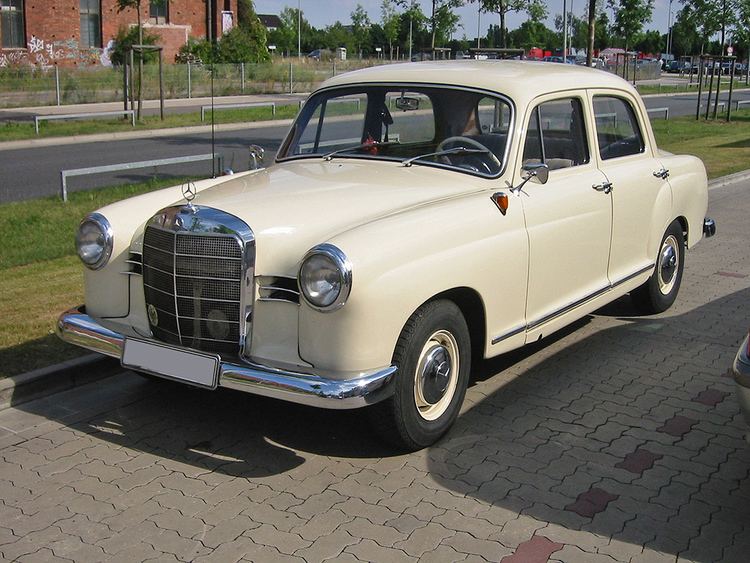Production 1953–1963 | ||
 | ||
Class Mid-size luxury carMid-size sports Car Body style 4-Door Sedan4-Door Limousine2-Door Coupe2-Door Convertible2-Door Pickup2-Door Cab Chassis2-Door Roadster | ||
The Ponton was Daimler-Benz's first totally new Mercedes-Benz series of passenger vehicles produced after World War II. In July 1953, the cars replaced the pre-war-designed Type 170 series and were the bulk of the automaker's production through 1959, though some models lasted through 1962.
The nickname comes from the German word for "pontoon" and refers to one definition of pontoon fenders — and a postwar styling trend, subsequently called ponton styling.
The Ponton models were replaced by the "Heckflosse" or "Fintail" models
There were essentially four types of Ponton cars. Note the "D" designates a diesel engine, and the suffix "b" and/or "c" are body variants introduced after the middle of 1959.
Design history
Mercedes-Benz emerged from World War II as an automaker in the early 1950s with the expensive 300 Adenauers and the exclusive 300SL grand tourers that gained it fame, but it was the simple unibody Pontons comprised the bulk of the company's revenues. Work began in earnest on the Ponton cars in 1951 with a design focused on passenger comfort and safety. Their as an urgency to replace the dated pre war designed W136 Type 170. Head of the design team was Dr. Fritz Nallinger. Styling was headed by Karl Wilfert. Daimler-Benz incorporated into the design criteria a unitary body frame body, based on the "three-box design". Part of the design team was Béla Barényi. Barényi designed the concept of the crumple zone, and the non-deformable passenger cell into the design. The crumple zones patent 854157, granted in 1952, describes the decisive feature of passive safety. Barényi questioned the opinion prevailing until then, that a safe car had to be rigid. He divided the car body into three sections: the rigid non-deforming passenger compartment and the crumple zones during collision. This design concept was proven by ADAC crash test facility in June, 2010 when a Mercedes Ponton was crash tested in their Technical Centre in Landsberg am Lech, confirming the existence of the design incorporated into the vehicle. This made for a milestone in car design with front and rear crumple zones for absorbing kinetic energy on impact.
